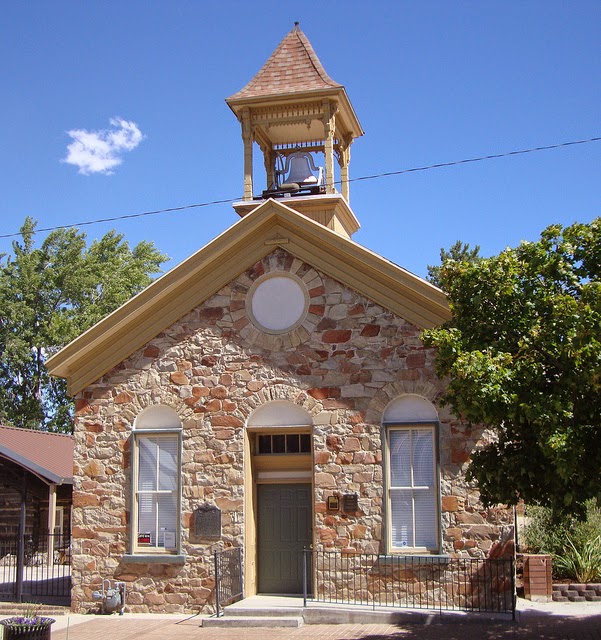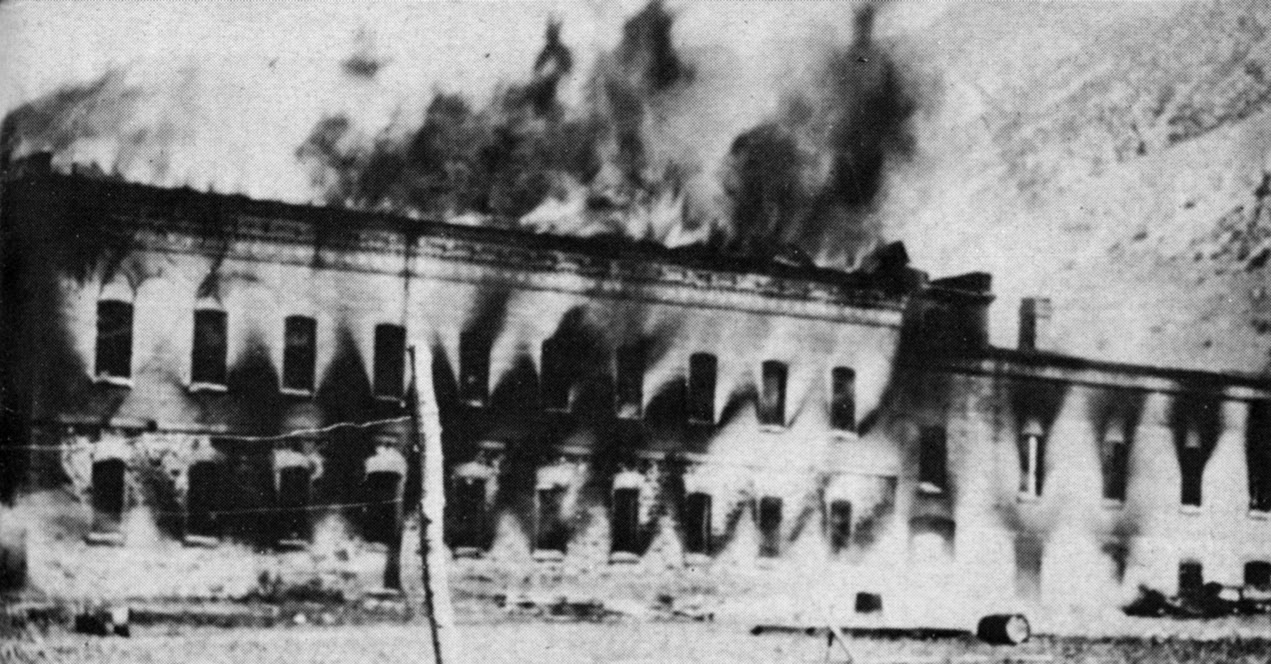The Box Elder County Court House was built in 1857. It was the first public building in the city. Before the walls were fully built, a strong wind knocked down a portion of the structure. It was quickly re-built. Beside being used as a court house, it was used for church meetings, and the basement was used for dramatic productions.
In 1887, the Court House was remodeled, and given a fine Italiante exterior, with a stately tower. A clock was purchased for the tower, at a cost of $433.15. When Utah became a state, in January, 1896, so the story goes, the bell in the tower was rung so hard it cracked. The county borrowed a bell from the city of Corinne. It was hung in the tower.
In 1909, a large, front section was added to the front of the Court House. When its dome was built, the tower of the old section was removed. The bell was simply lowered into the rafters and roofed over. There it remained for a century. This author saw it, lodged in the roof beams, in the 1960s. In the image below, note the addition is being built on the front of the courthouse. The 1880s clock tower on the original section has not yet been removed.
Claims have been made that the Cache County court house, built in 1892-1893 (according to the Cache County Visitors’ Bureau), or 1883 (according to the pamphlet "Logan’s Historic Main Street." See also
A History of Cache County, 1997, p. 88) was the oldest functioning court house in the state of Utah. That is patently not true. When the new court house was built, and the old court house no longer served as either court house or county offices, the claim changed to "the oldest public building in the state of Utah still in use" ("Logan's Historic Main Street.")
Let us look at some dates.
As it turns out, the original Tooele County Court House was built in 1867 (
A History of Tooele County, 1998, p. 56), and is today still standing, and being used as a public building: a museum. See
here and
here.
The old Washington County Court House in St. George, completed in 1870 (
A History of Washington County, 1996, p. 69) still stands. After its time as courthouse ended in 1960, it continued to be a public building, now housing the visitors’ bureau, just like the old Cache County court house does today. See
here.
The old Beaver County Court House was built in 1882 (
A History of Beaver County, 1999, p. 142), a year
before oldest section of the Cache County court house. It is being used today as a museum and visitor center, like the old Cache County court house. See
here.
If the argument is made that the Box Elder Court House doesn’t count because of its 1909 addition, then, to be fair, the Cache County court house received large additions in the 1890s and in 1915. If we, then, date
it to its latest addition, then the Garfield County Court House, in Panguitch, finished in 1908 (
A History of Garfield County, 1998, p. 209), and "still being used for its original purpose" is older. See
here.
So is the Piute County Court House in Junction, built in 1903 (
A History of Piute County, 1999, pp. 203-204), though today it is in private hands. See
here.
The Summit County Court House in Coalville was built in 1903-1904 (
A History of Summit County, 1998), p. 187). It is still being used for all its original functions, and thus predates the 1915 Cache court house. See
here.
The old Salt Lake City Hall, called Council Hall, was the seat not only of Salt Lake City government, but also the Territorial legislature, from its completion in 1866. See
here.
It was used until completion of the City County Building in 1894 (see
here). In the 1960s, it was moved to capitol hill. Council Hall is, today, being used as a visitors’ bureau (see
here), just like the main use of the old Cache court house. Even the 1894 City County Building (see
here and
here) is older than the 1915 date of the latest addition to the Cache County court house.
Perhaps the very oldest public building in the state of Utah is the old Territorial State House in Fillmore, built between 1852 and 1855.
What stands today is one wing of the projected structure. See
here and
here.
When the state capitol building was being renovated, Governor Jon Huntsman, whose family comes from Fillmore, used the Territorial Statehouse as a Utah state public building, to deliver the state of the state address, in 2005, making it Utah's oldest public building used for its original purpose.
The claim that the Cache County court house, even after it ceased being the county court house, was the oldest public building in use in the state of Utah proved to be so egregiously untrue that the story was carefully altered to "the oldest county building in Utah still being used for its original purpose." It houses the visitors’ bureau, and the county attorney’s office, and hosts meetings of county officials. That is a small part of its original purpose.
The Box Elder County Court House remains far and away the oldest county court house in Utah, originally built in 1857. Its large addition was in 1909,
six years before the last addition to the Cache County structure. The Box Elder County Court House still house the county commission, the county recorder and assessor and the other county offices. It remains the oldest county courthouse in Utah still being used for its original purpose. See
here.
Anyone who would claim otherwise does so in the face of a contrary reality.
The three top black-and-white images are from the author's collection. The bottom image of the Box Elder County Courthouse, as well as that of the old Cache County court house, are coprighted by the author. The remainder come from the world wide web, and are assumed to be in the public domain.











































